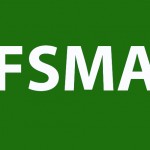Rapid technological advancements are availing new technological approaches at an exponential rate and are offering businesses more effective means of implementing food safety systems that are based on holistic models and synergistic to their business goals (the leading of which is improved efficiency).
One of the key aspects of these technological applications is the increased automation of manufacturing processes designed to reduce or eliminate so-called “human errors” from critical processes that may affect product safety from a consumer’s perspective. In the pharmaceutical, biologics and medical device industry, this has been the leading trend in the recent past. One of the key driving forces behind these enhanced technological applications is the increased operational efficiency attributed to the replacement of manual processes from documentation to operations of processes.
However, the new FSMA regulatory requirements do not render themselves as, for lack of better terminology, technology friendly.
Organizations, including many food production and manufacturing businesses, are employing new management approaches in an attempt to keep up with the dynamic complexity of the business world, from rapidly changing consumer trends to new emerging technologies and products in order to gain competitive advantage.
One of the new approaches that is gaining popularity is the approach of systems business dynamics, which employ the concept of systems thinking, whereby the organization tries to gain a holistic end-to-end understanding of its internal business processes and their interrelationships and interactions with the external environments, including its supply chain. Rapid technological advancements are enabling organizations to effectively apply this approach (i.e., the new rage on the application of Big Data and the Internet of Things in the manufacturing field. For example, the distribution centers of Amazon that employ Internet of Things technology in handling customer orders, including groceries).
Food manufacturing organizations or facilities can borrow the systems approach in using these new emergent technological applications in effecting food safety control (Currently applied in some areas of the pharmaceuticals, biologics and medical device manufacturing industry. Disclaimer: I previously worked for a major medical device market leader). Facilities can employ a holistic end-to-end technological approach of implementing and documenting process controls to assure product safety, within the organization using an enterprise-wide application of technology in tracking, handling, monitoring and documenting production processes, from the use of RFID pallets for material handling to the use of smart chips that transmit wireless data on the real-time functioning of the device during its usage. These measures could provide the following benefits:
- Gain a more precise understanding and control of its processing operations and finished goods product movement within the entire food supply chain
- Gain useful real-time data on potential risks that may be presented to the production material either during its movement or processing, and lead to the production of hazardous product, so that effective controls are promptly applied
- Gain important (predictive) information that may inform the facility’s management decisions on the enhancement of its product safety protection measures
Rapid advances in technology are availing similar technological applications to food manufacturers as systems that provide enterprise solutions of enabling efficiency while at the same time enhancing the product safety to assure the wellbeing of its consumers. Most of these technological applications are assuming a holistic approach of employing a technological application in a holistic manner. This includes the use of smart chip ingredient material handling (i.e., smart chip-embedded pallets) and with production processes, the blended use of software programs with minimum human machine interfaces, the use of robotics in packaging and processing, and smart labels and packaging that can transmit real-time data about the condition of a product, providing concise information on potential hazards that may be presented to the consumers.
The current regulatory requirements adopt a reductionist/analytical thinking (linear structured) approach in which food safety controls are to be implemented as stand-alone programs that should be easily discernable for verification at the facility level. This can be inferred from the FSMA regulatory text, which at its core calls for availability of written programs (which sound prescriptive) as opposed to documented programs, which would provide for the application of other technological formats, such as electronic media, in describing the food safety controls of the facility.








I disagree with your assertion that the regulation isn’t flexible or technology friendly. The basic premise that because FSMA requires a facility to have a documented PLAN in addition to records that demonstrate the plan is implemented does not by its nature have any affect on the controls an organization puts in place to achieve food safety. If a facility cannot describe, in their own way, what their Food Safety System entails then how can it be verified? How can one gauge its effectiveness? It seems that you’re also interpreting “written plan” to mean that it has to be physically printed out? FSMA does not require this, it requires the plan to be documented somewhere, it can be electronic and “available at the click of a button” and that suffices as a written plan. The key here is that there is a documented description of what WILL be done with respect to preventive controls that a facility has implemented… otherwise how could that PC ever be verified?
There’s lots of flexibility in the rules as evident by the detailed comments & responses released by FDA upon publication of the PC for Human Food final rule. Response, 131 on page 181 describes a food safety system in which magnets and screens could be categorized as cGMPs as opposed to preventive controls… if that’s not flexibility……
There’s really nothing in the text of the rule that precludes a facility from using an electronic approach to documenting how their system works. The key is that the food safety plan, in whatever form it takes, needs to be a detailed description of what is being done and includes the management components (monitoring, corrective actions, verification, and validation) as appropriate IN ADDITION to implementation records.
Patrick, I agree with David. FDA may have used a term that you interpreted as requiring paper documentation. However, 21CFR11 explicitly allows the use of electronic records for any prerequisite record in another section of the regulations. I see no reason that this would not include storage of the food safety plan. The key will be that the plan is readily accessable to all employees that need it.
Thank you gentlemen for the critical reviews, while I understand the perspectives of your arguments, I’d like to point out that the regulatory text itself-“a qualified facility should have a WRITTEN Plan differs from the statement David made, that a facility should have a DOCUMENTED food safety plan. It may seem like a trivial focus on semantics, but this trivial difference could have an impact on the architectural structure of an organization’s food safety system. I think we’ll all concur that in some facility’s(especially in corporate enterprises) food safety systems will not be implemented and function as discrete entities, but rather as sub-system elements nested within the organizational hierarchy of systems. The use of the regulatory text ‘Written programs’ in my view implicitly precludes the application of visual documentation in describing the processes or structure of a given system. With new technological advances that are enabling far more application enterprise engineering of organizational systems-including Food safety systems, using model based systems engineering, I don’t see how the term “written food safety plan” would be a good fit, versus a the use of the term a DOCUMENTED plan. From the regulatory enforcement perspective, I would see the need for the usage of a terminology that will enable uniformity in interpretation of the requirements-hence a written plan, such that one cannot have employ the use of a model based food safety system-It has to be a PLAN. However not all businesses are the same in structure, in fact every business is unique unto its business model. Well for my argument’s sake, what if the regulatory language was revised to say ‘Every Facility will be required to have a DOCUMENTED food safety plan, describing the implementation of all the preventive rules requirements? I’d bet this will accord businesses more leverage in determining the architectural structure of their food safety systems, and allow the application of a modular approach in developing their food safety management systems.
If you review the comments and arguments presented during the review of the ISO quality management standard ISO 2000:2015 by the ISO/TC 176 in changing a similar requiring that was in the previous standard ISO 2000:2008 .The technical committee changes it’s requirement provisions from requiring that an organizations have WRITTEN quality Plans, to requiring DOCUMENTED informationhttp://www.iso.org/iso/documented_information.pdf, you can see the basis of my argument.
Thanks
Written documented plan with a virification system should work fine! HACCP- based with a full GMPs in place.